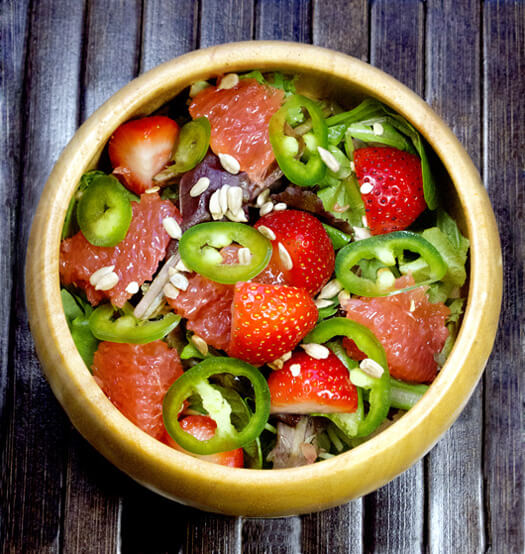Overexfoliated your skin during lockdown? Not a problem– try one of the new barrier repair creams on the market. But do they really live up to the marketing hype?
Instagram was full of posts from bored lockdowners who had exfoliated their poor skin into a bloody pulp and then turned to a barrier repair cream for help. According to skin expert Andy Millward, their skin would have returned to normal if they had just stepped away from the exfoliator. No need to spend a fortune on a fancy new barrier repair cream, then.
Skin Expert Andy Millward: “Barrier Repair is a process, not a product.”
When did we start taking our outer layer of skin for granted? Deep down we know the answer. We need to stop overprocessing our skin: overcleansing, overexfoliating and overloading it with active ingredients. Andy blames the increasing access to ingredients previously only available under clinical supervision:“Certainly the popularity of ‘buffet brands’ such as The Ordinary and The Inkey List has democratised skincare and we can now formulate our own high strength routine.”
Perhaps this wouldn’t be a problem if we understood our skin. (We don’t). It seems we can’t be trusted with such strong ingredients and now our skin is paying the price. Good job for barrier creams, right?
Not so fast. Andy explains that formulation is far more complex than just chucking in a ceramide or two. It’s not just about what you add, but what you take out: “Barrier repair is a process, not a product. Just…adding ceramides into a product or D-Panthenol into a product that’s also got other barrier disruptors in there like emulsifiers, or fragrances.”
Green Chemist Karen Sinclair Drake: Barrier Repair Creams vs Cold Creams.
Karen Sinclair Drake, award winning green chemist and cofounder of DermOne Health and Wellness, agrees that we are overtreating our skin. She explained: “The beauty industry has created an epidemic of sick skin because they are not focusing on the cause, just focusing on the symptoms.” When our skin is healthy, it is perfectly capable of hydrating and exfoliating itself: “The skin is not a complicated organ, it just needs the perfect environment to function in a healthy way and when you give it that basic environment which is not spending 100s and 100s on all different products magic truly happens”.

So how do we keep our skin barrier healthy?
Sinclair Drake explains that our skin barrier is strongest when it is slightly acidic (pH 4.7 to 5). Good bacteria, which protects the surface of the skin, is slightly acidic; bad bacteria, which causes inflammation, is alkaline. She notes that barrier creams do not always take this into consideration, and those with a higher pH will open the door to unwanted bacteria. “The moment that happens, it doesn’t matter what ingredients are present in the topical application, the bad bacteria will take over and the skin’s integrity will slowly break down.”
Sinclair Drake disapproves of silicone-based barrier creams because they are just a quick fix – they can’t penetrate the skin and are just washed off at the end of the day. Organic, natural formulas containing cold pressed oils absorb far better into the upper layer of the skin where they can beef up the barrier function long term: “The closer to nature your skin can be, the more it will stay balanced.”
Ironically, when our barrier is slightly acidic, our skin can hydrate itself so we don’t need to rely on a thick barrier cream. She added: “It actually helps enhance our skin’s own natural moisturizing factor. And again, that’s key when looking for a barrier cream so that means you don’t have to use the heavy types of cold cream style formula which quite frankly just smother the skin”
Dr Mervyn Patterson: Ceramides vs Cholesterol
Dr Mervyn Patterson, medical director of Woodford Medical, has also noticed the recent influx of barrier repair creams on the market, but has seen little proof to back them up. He explains that barrier repair depends on the correct ratio of key lipids. In young skin, the barrier is made up of equal amounts of three lipids: cholesterol, ceramides and fatty acids. (Lipids bind skin cells together and keep moisture in and irritants out). However, further research by the founder of Epionce skincare, Dr Carl Thornfeldt proved that a damaged barrier actually needs to be repaired by a ‘cholesterol dominant formula’ instead. These new wave of barrier repair creams proudly boast ‘ceramides’ all over their packaging, but no mention of cholesterol. Did they not get the memo?

He also points out that an effective delivery system is crucially important otherwise these ingredients can’t reach the deeper layers of the epidermis so the skin can heal itself: “But it’s not enough to have the correct formulation of the 3 key lipids, there must be effective delivery mechanisms to make sure the precursor lipids are delivered deep into the base of the basal layer so that the young epidermal cells assimilate these lipids and convert them into the correct ratio as they ascend up to become the surface roof tiles.”
The reality is that all moisturisers should contain barrier repair ingredients. We obsess over anti-aging, but the health of the barrier is far more important. They don’t give flashy results like anti-aging ones – they are defenders rather than attackers. But prevention is never as sexy as cure.



